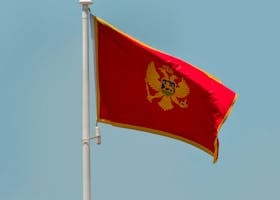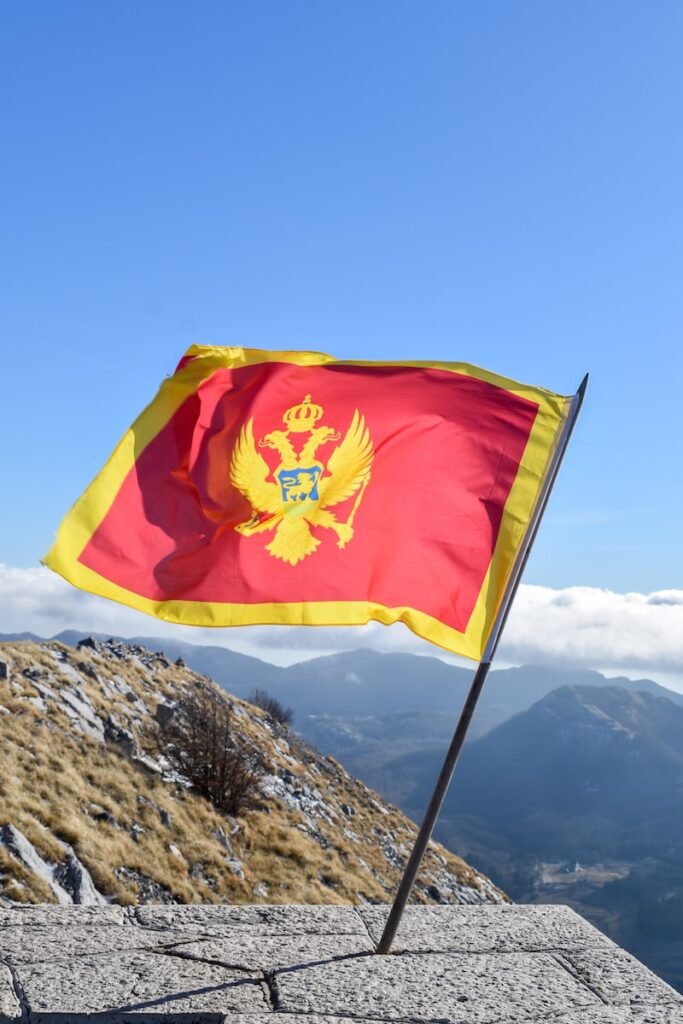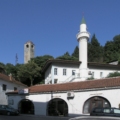The flag of Montenegro, while simple in design, carries a profound representation of the nation’s cultural heritage and enduring traditions. Its features are a testament to the country’s historical journey and core values, evolving through various iterations over the years. In the following discussion, we aim to delve into the aesthetics, significance, and symbolic interpretation of the Montenegrin flag.

History of the Montenegro Flag
The Montenegro flag has a rich history that spans centuries. Its original design featured a red banner with a white eagle in the center, representing the medieval state of Zeta. Over the years, the flag underwent several changes, including the addition of a crown when Montenegro became a kingdom in 1910, and modifications to reflect the country’s status as a republic within Yugoslavia in 1945. To find out more about the history, read this article on how this country came into being.
In 2004, Montenegro regained its independence from Serbia, and a new flag was adopted. The current design features a red banner with a coat of arms in the center, reminiscent of the original Zeta flag.
Meaning and Symbolism of the Montenegro Flag

- The red color represents the country’s history and the blood of its people.
- The golden border around the coat of arms represents the country’s prosperity and wealth.
- The coat of arms features a two-headed eagle, a traditional symbol of Montenegro, holding a scepter and an orb that represent the country’s independence and sovereignty.
- The eagle’s heads are turned towards the East and the West, representing Montenegro’s desire to be a bridge between the two.
- The crown on top of the eagle’s head represents the country’s royal heritage, while the shield at the eagle’s breast depicts a lion with a sword, representing courage and strength.
Design of the Montenegro Flag
The flag of Montenegro boasts a simple yet meaningful design.
The flag of Montenegro proudly displays a golden lion passant as its central emblem. This heraldic lion, a timeless symbol of strength and valor, holds great significance for the country. The lion is depicted in a dynamic posture, with one paw raised in motion. This portrayal evokes a sense of power, resilience, and nobility that aligns with Montenegro’s rich history and heritage. The golden hue of the lion represents prestige and magnificence, underscoring Montenegro’s enduring spirit. As a focal point of the national flag, the lion serves as a powerful reminder of the country’s unwavering courage and indomitable nature.
It consists of a red field with the national coat of arms in the center. The flag of Montenegro proudly features a golden double-headed eagle at its center, serving as a distinguished emblem of the nation. This iconic eagle carries historical and cultural significance, evoking a sense of power, authority, and national pride. The double-headed eagle symbolizes the sovereignty and independence of Montenegro, reflecting its rich heritage as a monarchy. Each head of the eagle is adorned with a golden crown, representing the regal legacy and noble lineage of the country. With one head facing east and the other facing west, the eagle signifies Montenegro’s historical ties to both Eastern and Western influences. The presence of the eagle on the Montenegro flag captures the spirit of resilience, unity, and sovereignty that defines the nation.
The double-headed eagle, an emblem of power and regality, holds a prominent place in heraldry and flag design. Its striking image can be found on various flags, symbolizing different nations and cultures. Besides Montenegro, the double-headed eagle is prominently featured on the coat of arms of Albania, representing the country’s strength and unity. In addition, it is present on the flag of Serbia, where it symbolizes the historical ties and shared heritage of the Serbian people. The double-headed eagle has also been historically associated with the Byzantine Empire, serving as a potent symbol of imperial authority. Its widespread use reflects its enduring appeal and resonance, embodying the virtues of leadership, sovereignty, and magnificence in diverse contexts.
The flag’s vibrant red color represents courage, bravery, and the spirit of the Montenegrin people. This flag design encapsulates the nation’s history, values, and its rich cultural traditions.
Conclusion
In conclusion, the flag is a powerful symbol of the country’s culture and traditions, with a design that reflects the country’s history and values. Whether you’re a citizen or a visitor to the country, the flag is an important symbol of the country’s past, present, and future. By understanding the meaning and symbolism of the Montenegro flag, we can better appreciate the rich history and culture of this beautiful country.





